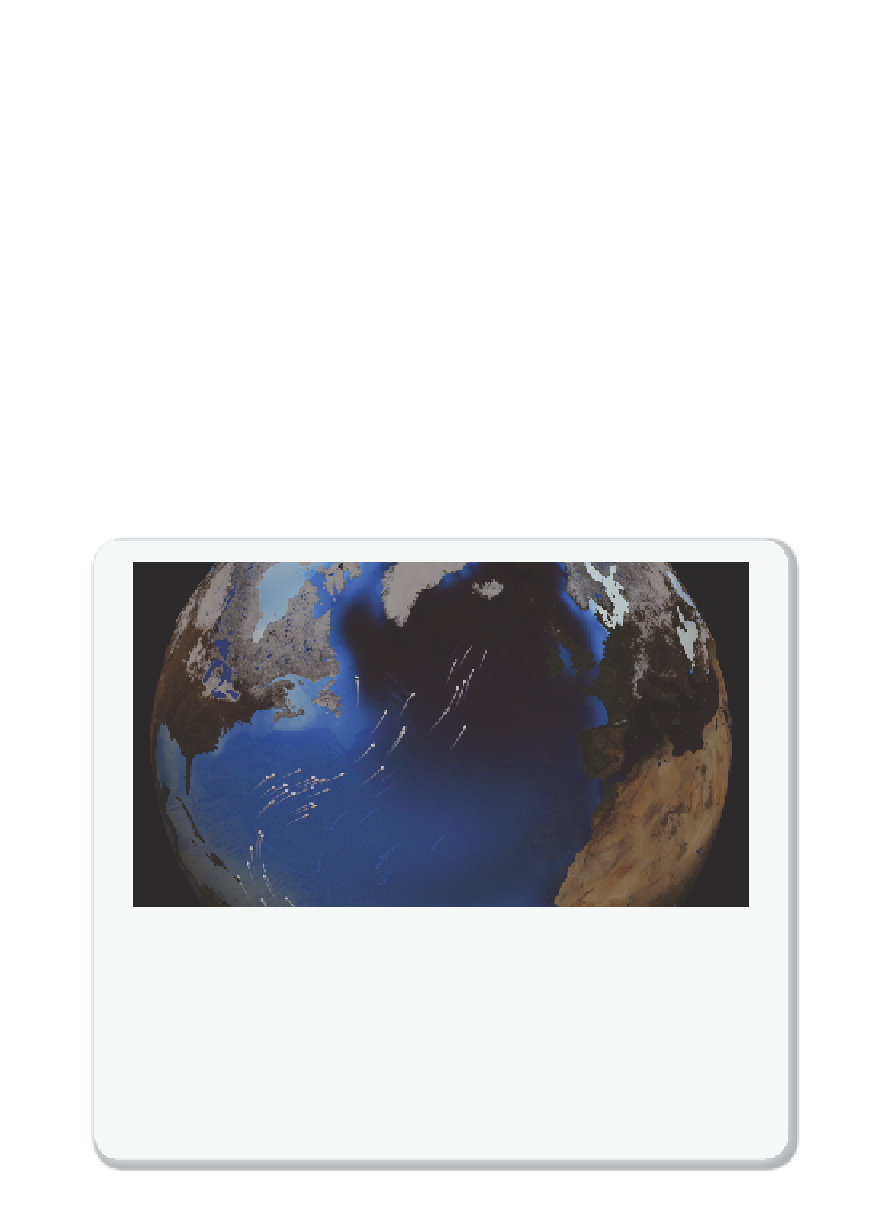Environmental Engineering Reference
In-Depth Information
Figure 3.3.3
(
Continued
)
decomposed to “regenerated” nutrients and excess CO
2
(CO
2
added by regenera-
tion of organic matter), sequestering CO
2
away from the atmosphere and into the
deep ocean. The nutrient-poor surface waters do not return immediately into the
interior but rather become cold and thus dense.
Figure by Sigman et al.
[3.8],
reproduced with permission from Macmillan Publishers.
(c) The loop in the Southern Ocean, however, shows the low effi ciency imparted by the
high-latitude, high-nutrient surface regions, currently dominated by the Southern
Ocean, especially its Antarctic zone near the Antarctic margin. There, nutrient-rich
and excess CO
2
-rich water comes into the surface and descends again with most of
its dissolved nutrient remaining (now referred to as “preformed”). In so doing, this
loop releases to the atmosphere CO
2
that had been sequestered by the regenerated
nutrient loop.
Figure by Sigman et al.
[3.8],
reproduced with permission from
Macmillan Publishers.
Movie 3.3.1
Thermohaline circulation
The region around latitude 60 south is the only part of the earth where the ocean can
fl ow all the way around the world with no obstruction by land. As a result, both the
surface and deep waters fl ow from west to east around Antarctica. This circumpolar
motion links the world's oceans and allows the deep water circulation from the Atlantic
to rise in the Indian and Pacifi c Oceans, thereby closing the surface circulation with the
northward fl ow in the Atlantic.
Figure from NASA/Goddard Space Flight Center. This
movie can be viewed at
: http://www.worldscientifi c.com/worldscibooks/10.1142/
p911#t=suppl











Search WWH ::

Custom Search